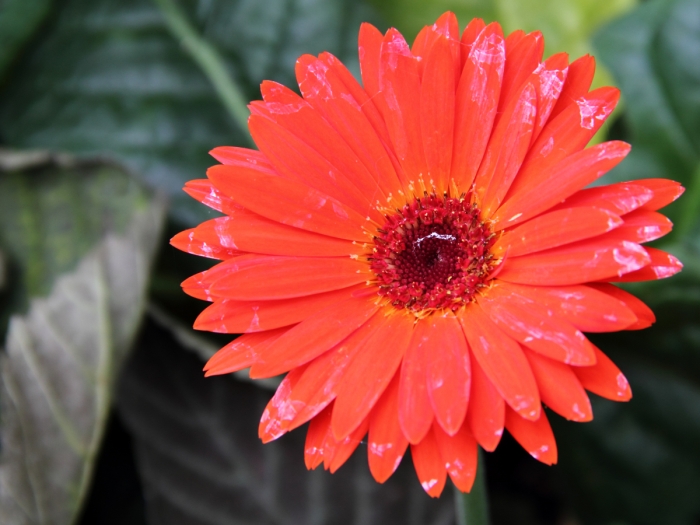Barberton Daisy
(Gerbera jamesonii)
Barberton Daisy (Gerbera jamesonii)
/
/

Fan Wen
CC BY-SA 4.0
Image By:
Fan Wen
Recorded By:
Copyright:
CC BY-SA 4.0
Copyright Notice:
Photo by: Fan Wen | License Type: CC BY-SA 4.0 | License URL: https://creativecommons.org/licenses/by-sa/4.0 | Uploader: Fanwen619 | Publisher: Wikimedia Commons | Title: Gerbera_Jamesonii_-_flower_view_03.jpg | Notes: |















Estimated Native Range
Summary
Gerbera jamesonii, commonly known as the Barberton Daisy or Transvaal Daisy, is a perennial herb native to grasslands and sandy soils in South Eastern Africa. This species is part of the basal Mutisieae tribe within the Asteraceae family. It typically forms a tufted clump with naked flowering scapes that can reach up to 75 cm in height. The plant is renowned for its large and showy flowers, which are 4–5 cm in diameter and come in a variety of colors including orange-red, yellow, orange, white, and pink. The Barberton Daisy blooms from September to December and reproduces asexually.
The Barberton Daisy is celebrated for its vibrant, daisy-like flowers that make it a popular choice for ornamental use in gardens and as cut flowers. It is an ancestor of all cultivated Gerbera forms, with thousands of cultivars available, such as ’Sazou’, ’Sangria’, ’Rosalin’, ’Pink Elegance’, ’Tropic Blend’, ’Piton’, ’Winter Queen’, and ’Savannah’. These cultivars are propagated by tissue culture and seeds. In cultivation, the plant thrives in full sun to part shade and requires medium amounts of water, preferring soils with medium to fast drainage. While generally easy to maintain, Gerbera jamesonii can be susceptible to fungal diseases such as powdery mildew and root rot if overwatered or if drainage is poor. It is important to ensure good air circulation around the plants to prevent disease.CC BY-SA 4.0
The Barberton Daisy is celebrated for its vibrant, daisy-like flowers that make it a popular choice for ornamental use in gardens and as cut flowers. It is an ancestor of all cultivated Gerbera forms, with thousands of cultivars available, such as ’Sazou’, ’Sangria’, ’Rosalin’, ’Pink Elegance’, ’Tropic Blend’, ’Piton’, ’Winter Queen’, and ’Savannah’. These cultivars are propagated by tissue culture and seeds. In cultivation, the plant thrives in full sun to part shade and requires medium amounts of water, preferring soils with medium to fast drainage. While generally easy to maintain, Gerbera jamesonii can be susceptible to fungal diseases such as powdery mildew and root rot if overwatered or if drainage is poor. It is important to ensure good air circulation around the plants to prevent disease.CC BY-SA 4.0
Plant Description
- Plant Type: Herb
- Height: 1-1.5 feet
- Width: 0.8-1 feet
- Growth Rate: Moderate
- Flower Color: Yellow, Orange, Pink, Red, White, Brown
- Flowering Season: Fall
- Leaf Retention: Evergreen
Growth Requirements
- Sun: Full Sun, Part Shade
- Water: Medium
- Drainage: Medium, Fast
Common Uses
Bee Garden, Border Plant, Butterfly Garden, Drought Tolerant, Low Maintenance, Showy Flowers
Natural Habitat
Native to grasslands and sandy soils in South Eastern Africa
Other Names
Common Names: Transvaal Daisy, Barbertonse Madeliefie, Rooigousblom, Gerbera
Scientific Names: , Gerbera jamesonii,
GBIF Accepted Name: Gerbera jamesonii Bolus